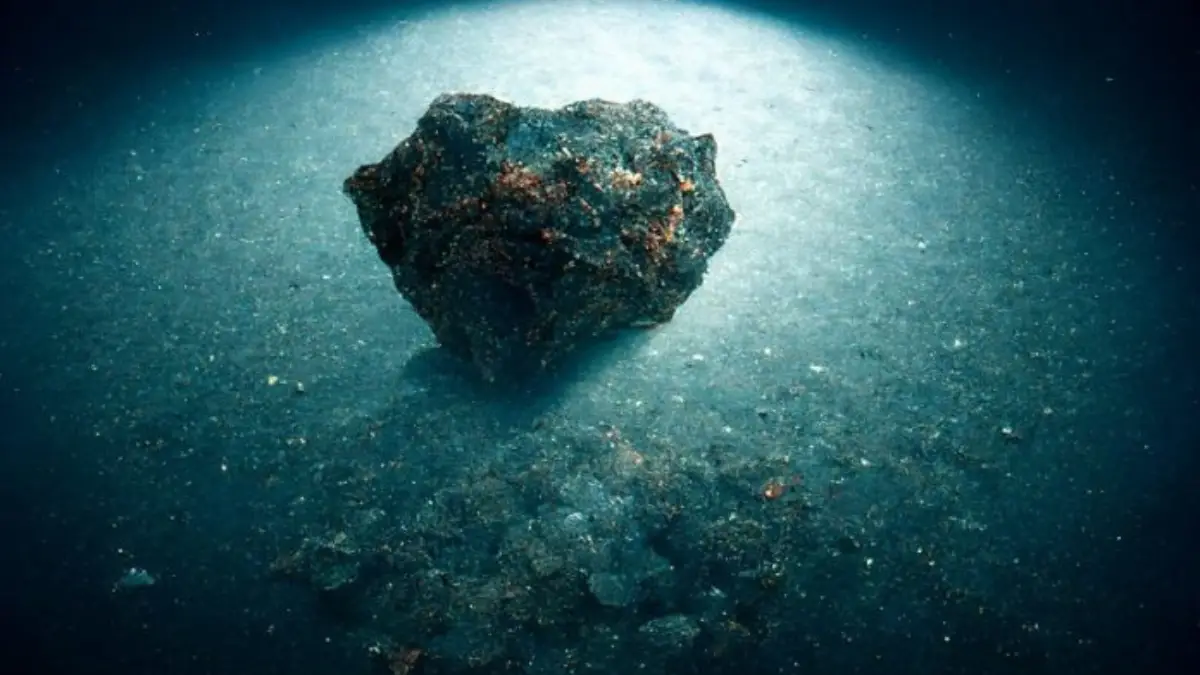The Universe
There’s a Mysterious “Interstellar Object” at the Bottom of the Ocean That Crashed in 2014
Harvard professor Avi Loeb’s team of scientists are now trying to retrieve it.

The first-ever confirmed interstellar object in our solar system was ‘Oumuamua in 2017, which was then followed by Borisov in 2018.
While Borisov clearly behaved like a comet, ‘Oumuamua was so bizarre that many astronomers thought it could be an alien spaceship.
However, a few years before ‘Oumuamua was discovered, scientists thought they had detected an interstellar object that smashed into the Earth in 2014.
The probable interstellar object, known as CNEOS 2014-01-08, is thought to have been roughly half a meter in width. Harvard professor Avi Loeb and then-graduate student Amir Siraj were the first to identify the object’s potential interstellar origins.
Now, Loeb and Siraj have organized a team of scientists to retrieve the mysterious object from the bottom of the ocean off the coast of Papua New Guinea.
Using data from a catalog about the object’s path, Siraj and Loeb came to the conclusion that it might not be from our Solar System. This is because the object had an unusually high heliocentric velocity, which means it was moving at speeds that indicate it might not be bound within the Sun’s gravity well.
Having said that, there is a catch. The data utilized to measure the object’s impact with Earth came from a spy satellite that was operated by the U.S. Department of Defense, designed to monitor military activity on Earth.
As a consequence of this, the particular error values of the measurement are a closely guarded secret. Additionally, the U.S. military is cautious about allowing the specific capabilities of their secret spy satellite to become publicly available information.
Because of this, some members of the scientific community remain reluctant to formally designate CNEOS 2014-01-08 as an interstellar object in the absence of such information. As a result, Siraj and Loeb’s paper is still unpublished because it hasn’t gone through peer review.
Then on April 22, 2022, U.S. Space Force’s Space Operations Command Chief Scientist, Joel Mozer, examined the relevant classified material and strengthened their argument when he “confirmed that the velocity estimate reported to NASA is sufficiently accurate to indicate an interstellar trajectory.”
Most of the meteorite would have burned up as it tumbled through Earth’s atmosphere, likely leaving behind only small pieces that are spread out across the bottom of the ocean just off the coast of Papua New Guinea.
However, the pieces are likely to be magnetic, so a ship searching the ocean floor with a big magnet could potentially pick up the tiny pieces of interstellar object.
Siraj and Loeb want to do this, so they are working with a ocean technology company to make it a reality.
In an interview with last year with Universe Today, Loeb said that such a search for CNEOS 2014-01-08 could offer us “the opportunity to actually put our hands on the relic and figure out whether it’s natural, whether it’s a rock, or whether, you know, a small fraction of those [interstellar objects] might be artificial.”
Could It Really Be Made Aliens?
In the past few years, Loeb has talked openly about the possibility that interstellar objects like ‘Oumuamua could be artificial objects made by aliens. As the head of the Galileo Project, one of his main research goals is to look for signs of intelligent life in the Universe.
According to Loeb, who works as chair of astronomy at Harvard, ‘Oumuamua had too many bizarre properties to be natural.
Loeb is convinced that ‘Oumuamua is an extraterrestrial spacecraft, and he says that if we want to get a good look at the next one, we need to take this possibility seriously.
‘Oumuamua mysteriously remained hidden until it was already leaving the solar system. Therefore, there was no way to take high-quality pictures of it. Astronomers are fully aware that it is not a conventional space rock, however.
According to our best calculations, ‘Oumuamua is cigar-shaped and 100 meters long. As Loeb properly points out, we’ve never seen a natural object that looks anything like that.
Additionally, ‘Oumuamua is about ten times more reflective than ordinary asteroids or comets. That might indicate it has a shiny metal surface.
The force that drove ‘Oumuamua away from the Sun is what Loeb considers to be the most compelling. According to Loeb, it’s possible that ‘Oumuamua was actually a solar sail device that accelerated relative to its closeness to the Sun.
Writing in the Scientific American journal on June 22, 2021, he said:
“If some UAP turn out to be extraterrestrial technology, they could be dropping sensors for a subsequent craft to tune into. What if ‘Oumuamua is such a craft?”
Nevertheless, Loeb is not going so far as to suggest that CNEOS 2014-01-08 could actually be an artifact from extraterrestrial life.
“This result does not imply that the first interstellar meteor was artificially made by a technological civilization and not natural in origin,” he and Siraj wrote in their paper outlining the ocean expedition.
Even if this interstellar object is only a rock, it will teach us a lot about the makeup of rocky matter that exists outside of our own Solar System, and that in and of itself would be an important piece of new data about the Universe to share with our world.
Typos, corrections and/or news tips? Email us at Contact@TheMindUnleashed.com
